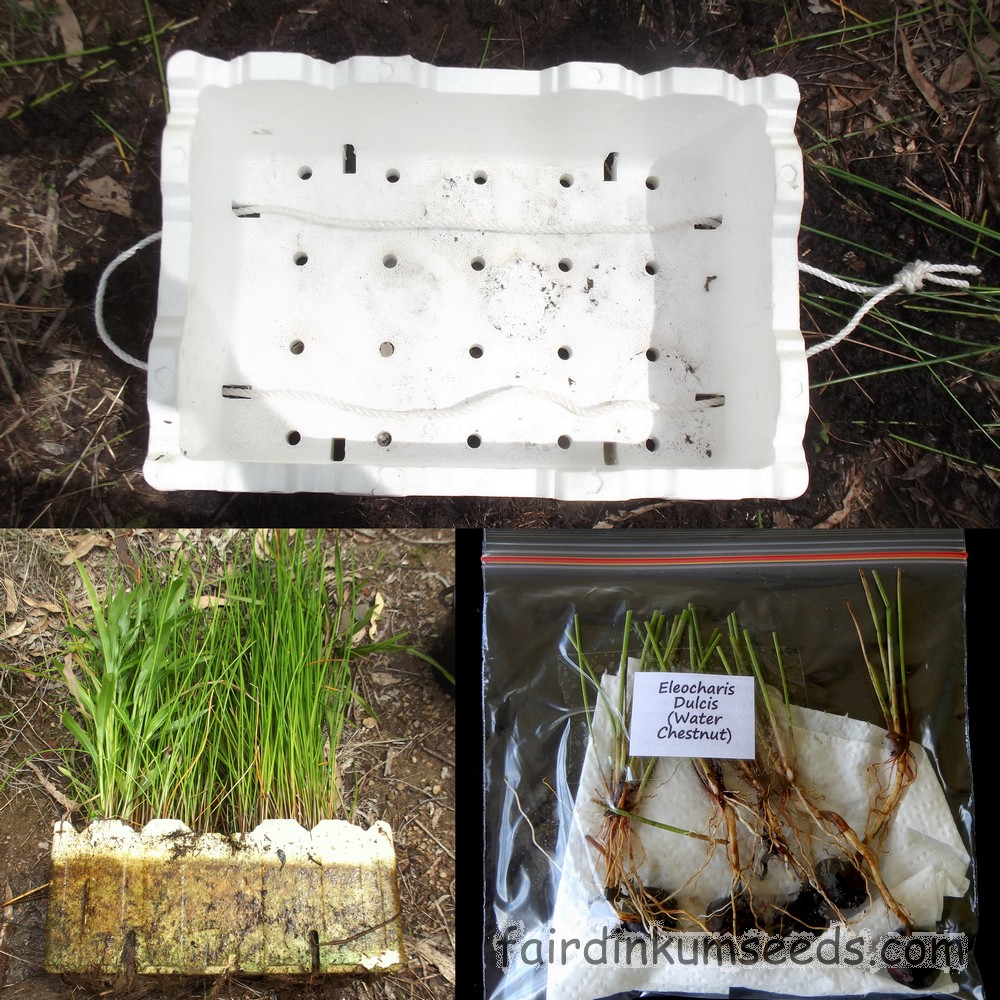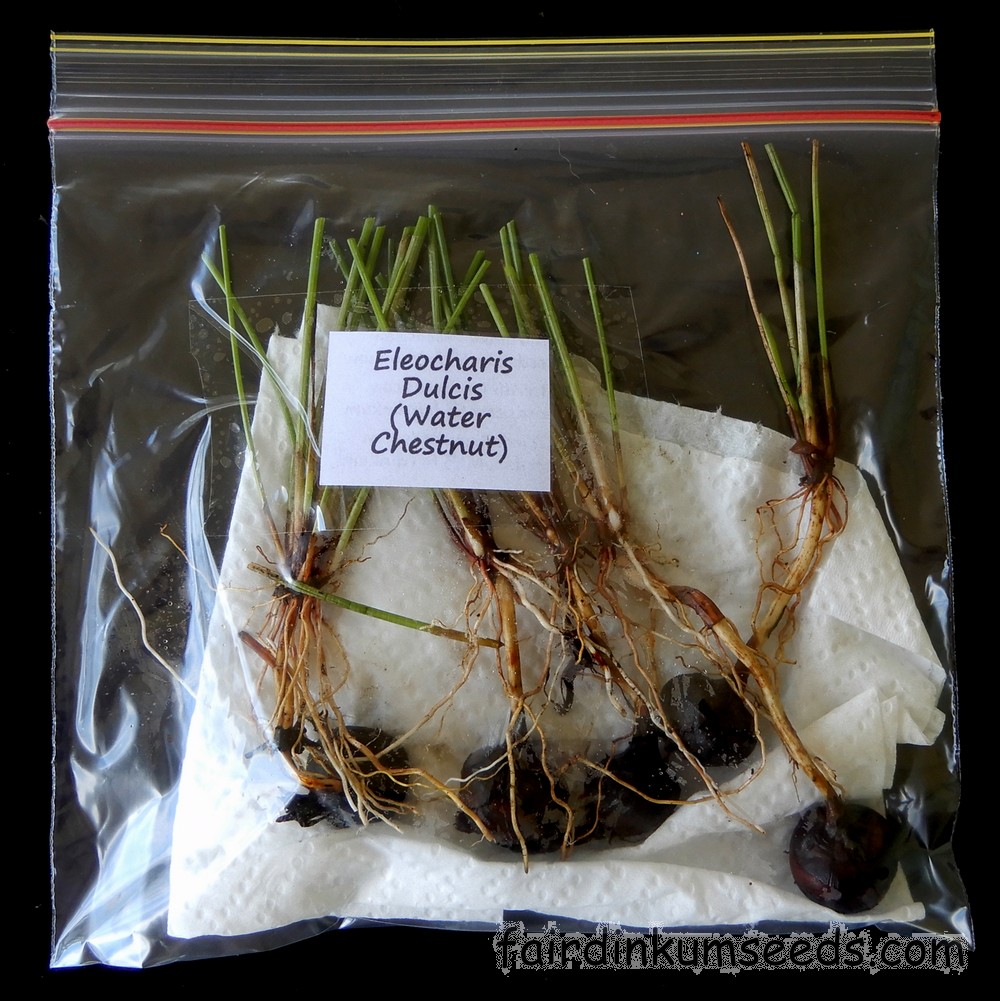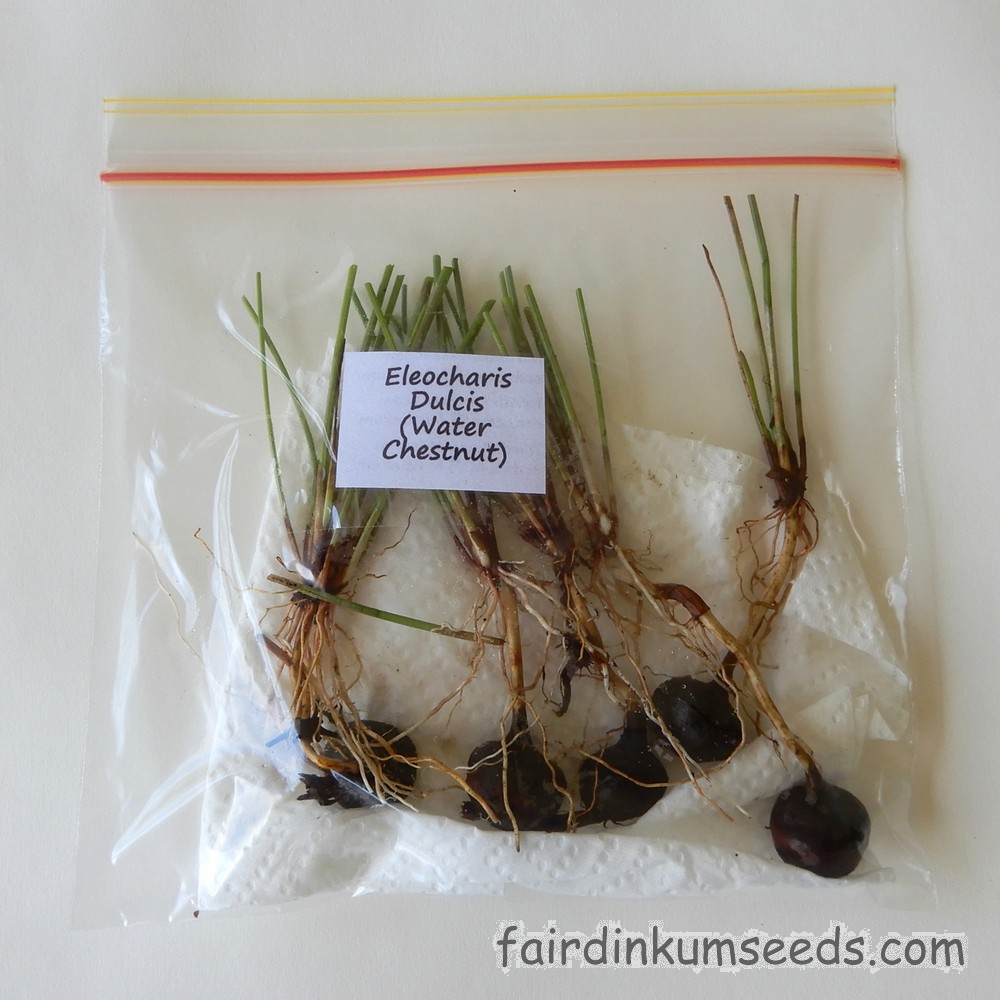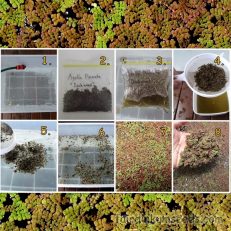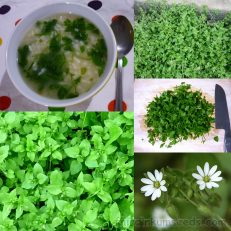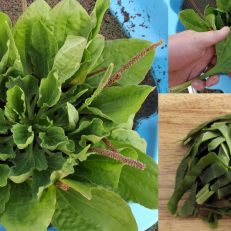Please read text!
Waterchestnut Tuber Eleocharis Dulcis Corms Roots
Packet containing 5x very small ready to plant corms or roots!
Normally just called waterchestnut, they are also sometimes called water chestnut, Chinese water chestnut, Andropogon dulce, apulid, babawangan, bi qi, bolotnitsa sladkaia, bulrush, buslig, cabezas de negrito, Carex tuberosa, chataigne d’ear, chataigne d’eau, chataigne d’eau vietnamienne, Chinesische wassernub, cu nang, Eleocharis austrocaledonica, Eleocharis equisetina, Eleocharis indica, Eleocharis plantaginea, Eleocharis plantaginoides, Eleocharis tuberculosa, Eleocharis tuberosa, Eleocharis tumida, ground chestnut, haeo, haeo chin, haeo-chin, haeo chine, Heleocharis plantaginoidea, Heliocharis tuberosa, hon matai, horse’s hood, horse hood tuber, inu-kuro guwai, kasuur, kutas, Limnochloa, Limnochloa plantaginea, ma tai, Ma tai, ma ti, max thafy, mem phlong, nawn ngojt, nuez china, ohkuru guai, oo kuro guwai, pagappo, peperetan, peperetan teki, scirpe doux, Scirpus dubius, Scirpus plantagineus, Scirpus plantaginoides, Scirpus tumidus, sesur, shirio kuro guwai, Shui deng xin cao, singhara, spikerush, spike rush, teki, tike, tuber bulrush, ubi puron, uke, wasserkastanie, or just waternut.
Super interesting plant and one of the few that naturally contains large amounts of “Puchiin“.
Puchiin is considered a safe and very effective, heat stable antibiotic and antifungal chemical.
It is even more effective than the food additive Potassium Ascorbate.
Potassium Ascorbate(E303~303) is very commonly used as a preservative agent in processed foods here in Australia and New Zealand, despite not being approved for use everywhere else…
So yeah, even more effective than the chemical that most other countries don’t consider safe as a food additive and preservative, and this stuff grows naturally in a tasty little edible root!
This natural antibiotic component is no doubt the reason for it’s traditional medicinal use for the treatment of mouth ulcers, urinary infection, fever, diarrhea, indigestion, sore throats, coughs, measles, abdominal pain, amenorrhoea, hernia, liver problems, jaundice, diabetes, and hypertension.
The juice just squeezed and dripped onto tropical ulcers and oyster cuts is a super common way to treat bacterial infections on the legs of fish and prawn farmers in many parts of SE-Asia. Cheap and effective, it said to work better than many other pharmaceutical alternatives.
Not that it’s proof of anything, but a commercial crabber mate of mine from up north reckons it dramatically fixed his disgusting Staphylococcus infected foot.
The antiseptic cream the local doctor gave him wasn’t working at all and his Asian neighbour was the one that told him to give it a go when he saw him limping from the boat one morning. Dude swears by it.
Me personally, I just eat them!
Sweet nutty and full of starch, it’s a really low maintenance plant that thrives along the boggy swampy shorelines of creeks dams and rivers of northern Australia and Asia.
Here at home I mostly use large 1/2 cut IBC tanks of my local sandy soil and I have the drainage hole level with the surface of the soil.
This allows water to pool in the bottom like a pond, but still allows the surface soil to drain if we get a heap of unexpected flooding type rain(I wish…).
The tub holds the water but still allows it to overflow and drain in an emergency.
I also grow it on rafts in the dam and in the gravel of my aquaponics, but the large tubs or no frills wicking beds works best for me here.
Lots of folks use bath tubs or 44gallon drums with great success.
I plant them much closer than most folks at ~20cm apart in a rough grid pattern.
~25 seedstock to each half cut IBC tank.
For me that spacing gives ~20 big corns from every single one planted after six months of growth. Plus a whole heap of small ones that are used for replanting the next crop.
The huge commercial growers in the warmer north space them ~50cm apart and they get up to one hundred corms from each one they plant!
Better conditions, warmer climate and regular low dose fertilising will give a much bigger harvest, but to my eye I can just do nothing, plant a little closer and still get a very good crop regardless.
Laziness and zero maintenance cost is best here I reckon?
The other really cost effective way to do it is in polystyrene boxes of sandy soil mix just floating on the dam.
Two seed stock per box, half a bag of cheap potting mix, float it out and tied in place with a rope and forgot about it.
Here at Gin Gin Queensland 4671 in ~7months time it is a solid full to the brim block of corms of at least a few kilos each.
Not bad at all considering polystyrene boxes are free from most supermarkets and greengrocers, and a the soil is only a buck or two per box, free if you make your own mix…
To eat it all you do is pull them out of the ground and peel them.
They are delicious and sweet when raw, and they become nuttier when cooked, and either way they add a nice crunch to salads, stirfries, curries, noodle dishes, whatever really?
The long strap like leaves can be used to weave with and they make a great mulch or compost.
That’s about it folks, keep them warm and moist and you can’t really go wrong.
Grown by me and the Mrs organically, no chems no nasties, no problems!!!
